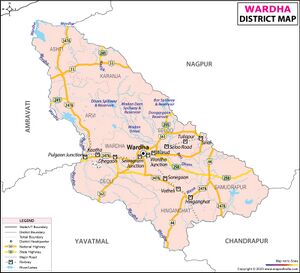Ashti
| Author:Laxman Burdak, IFS (R) |

Ashti (आष्टी) is a town and tahsil in Wardha district of Maharashtra. Its ancient name was Asi (असि) mentioned in Belora Plates (Sets A and B) of 11th year of Pravarasena II.[1]
Variants
- Asi (असि) mentioned in Belora Plates (Sets A and B) of 11th year of Pravarasena II.[2]
Jat Gotras Namesake
- Asiagh (असिहाग) (Jat clan) → Asi (असि) = Ashti (आष्टी) is a town and tahsil in Wardha district of Maharashtra. Its ancient name was Asi (असि) mentioned in Belora Plates (Sets A and B) of 11th year of Pravarasena II.[3]
Location
Etymology
Ashti word is a name of boy which from Arabic and Persian language. Meaning of Ashti is peace in Arabic and Persian language. So the name of Town is Ashti and nowadays Ashti is called as shahid Ashti due freedom fight in 1942 for Indian independence movement. Title "Shahid" is dedicated to freedom fighters.
Villages in Tahsil
1 Abadkinhi, 2 Ajitpur, 3 Ambikapur, 4 Anandwadi, 5 Antora, 6 Ashti, 7 Bambarda, 8 Belora Bk, 9 Belora Kh, 10 Bharaswada, 11 Bhishnur, 12 Borgaon, 13 Borkhedi, 14 Borkhedi, 15 Chamala, 16 Chincholi, 17 Chistur, 18 Dalapatpur, 19 Delwadi, 20 Deogaon, 21 Dhadi, 22 Drugwada, 23 Godri, 24 Hariswada, 25 Indarmari, 26 Jaitapur, 27 Jamgaon, 28 Jolwadi, 29 Kakaddara, 30 Kakaddara, 31 Khadaka, 32 Khadki, 33 Khambit, 34 Kinhala, 35 Kolhakali, 36 Lahan Arvi, 37 Lakhanwada, 38 Lingapur, 39 Mamdapur, 40 Manik Nagar, 41 Manikwada, 42 Milanpur, 43 Moi, 44 Mubarakpur, 45 Nababpur, 46 Narsapur, 47 Narsingpur, 48 Navin Antora, 49 Navin Ashti, 50 Navin Kakaddara, 51 Navin Ramdara, 52 Panchala, 53 Pandhurna, 54 Parsoda, 55 Peth, 56 Peth, 57 Pilapur, 58 Porgavhan, 59 Ramdara, 60 Ranwadi, 61 Rasulpur, 62 Sahur, 63 Sakindapur, 64 Salora, 65 Sattarpur, 66 Sherpur, 67 Sindivihira, 68 Sirkutni, 69 Sirsoli, 70 Sujatpur, 71 Sujatpur, 72 Talegaon, 73 Tarasawanga, 74 Tekoda, 75 Tembha heti, 76 Thar, 77 Thekakolha, 78 Tumni, 79 Wadala, 80 Wadegaon, 81 Wagholi, 82 Wardhapur, 83 Yenada, 84 Zadgaon,
Source - https://www.census2011.co.in/data/subdistrict/4015-ashti-wardha-maharashtra.html
Belora Plates (Sets A and B) of 11th year of Pravarasena II
Belora Plates (Sets A and B) of 11th year of Pravarasena II[4]were issued by Pravarasena II of the Vakataka dynasty. The former record the grant of the village Mahalla-Lata in the Asi bhukti, which was situated in the mārga (subdivision) of Shailapura (शैलपुर), while the latter register the donation of two villages, viz.., Dīrghadraha (दीर्घद्रह) in the Pākkana (पाकण) rāshtra and Mahallama-Laṭa (महल्लम लाट). Of these latter villages, the second is plainly identical with the village Mahalla-Lata of Set A as it is specified exactly like it. The grant recorded in Set B is, therefore, later than that of Set A. (p.17)
Mahalla-Lata (महल्ल लाट) or Mahallama-Lata (महल्लम लाट) which seems to mean the larger Lata may be represented by Ladki (लाड़की) or Ghat Ladki (घाट लाड़की) in the Morshi taluka of the Amaravati District, about 18 miles north by west of Belora1 Mahalla-Lata lay in the mārga of Shailapura (शैलपुर) which may be identical with Salbardi (सालबर्ड़ी)2 situated in the midst of hills about 15 miles east of Ladki.
Asi (असि), the chief town of the bhukti (subdivision) in which Mahalla-Lata was situated, may be identical with Ashti which lies only 10 miles south of Belora.
Dirghadraha (दीर्घद्रह) is probably Dighi (दीघी) on the left bank of the Wardha, about 30 miles south of Ashti. The name of Pravareshvara-shaḍvimsativāṭa which is mentioned in both the grants as the home of the donee seems to indicate that it was the chief village in a group of twenty-six villages. Perhaps it received this name from a shrine of Shiva called Pravareshvara installed by Pravarasena I and named after himself3. This place as well as Pakkana (पाकण), the headquarters of the rāshtra (division) in which Dirghadraha, one of the donated villages, was situated, cannot be traced now.(p.18)
1 There is another small village called Ladgaon (लाड़गांव) on the left bank of the Wardha, about 20 miles south of Belora.
2 Salbardi is an ancient place containing some old caves and hot springs.
3 Compare the name Vanko-Tummana of the first capital of the Kalachuris in Chhattisgadh (Ind. Hist. Quart., Vol. IV, p. 34). It was so called because of the shrine of Vankeshvara which it contained. It may be noted in this connection that the temple of Pravareshvara is mentioned in line 1 of No. 14, below.
History
In Mughal era, the Ashti was pergana under the guidance of Afghan Nobleman Nawab Muhammad Khan Niazi and his sons. His tomb and his son Nawab Ahmad Khan Niazi's tomb are located in Ashti.
In August 1942, Mahatma Gandhi announced the start of Quit India Movement. In response to this, people from Ashti and its nearby villages decided to actively take part in the Quit India Movement on date of 16 August 1942.
Places of Interest
- Kapileshwar Dham it is a Temple which is located at kapileshwar dam. This Temple is dedicated to Lord Shiva.
- Shahid Smarak Ashti situated at the river bank of Bakli river. It is Martyrs Memorial which is dedicated to freedom fighter.
- Chor Baoli, located at Imli pura Ashti, is a step well built by British.
Notable persons
Gallery
External links
References
- ↑ Corpus Inscriptionum Indicarum Vol.5 (inscriptions Of The Vakatakas), Edited by Vasudev Vishnu Mirashi, 1963, Archaeological Survey of India, p.16-21
- ↑ Corpus Inscriptionum Indicarum Vol.5 (inscriptions Of The Vakatakas), Edited by Vasudev Vishnu Mirashi, 1963, Archaeological Survey of India, p.16-21
- ↑ Corpus Inscriptionum Indicarum Vol.5 (inscriptions Of The Vakatakas), Edited by Vasudev Vishnu Mirashi, 1963, Archaeological Survey of India, p.16-21
- ↑ Corpus Inscriptionum Indicarum Vol.5 (inscriptions Of The Vakatakas), Edited by Vasudev Vishnu Mirashi, 1963, Archaeological Survey of India, p.16-21

